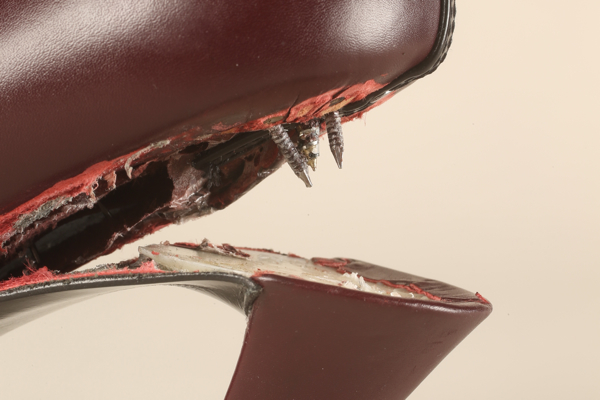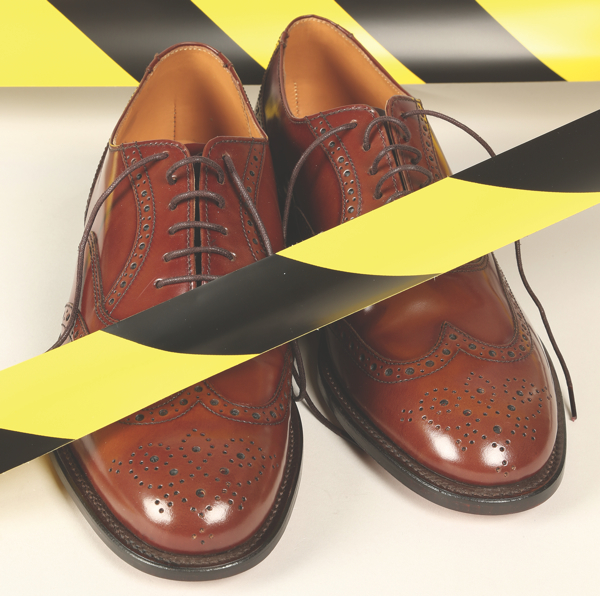Reasons for footwear recalls
Having to recall footwear from retailers and consumers once it has been placed on the market can be expensive.
by Mark Southam

Announcing a product recall – whether a voluntary action or being forced to do so by the authorities – is a request for purchasers to return goods that they have purchased. It may affect a specific batch of products or an entire production run, and is normally due to safety issues having been discovered.
It is an attempt to limit the company’s liability for corporate negligence (which could incur legal penalties), as well as an effort to avoid damaging publicity. Recalls are costly to conduct in an effective manner, as they often require the specified product to be replaced or the company to pay for any damage caused during use. Any consequential costs caused by damage to the brand name and reduced trust on the part of the consumer may, of course, be significantly higher.
Action points
The recall of a product usually involves a number of stages, although the specifics may differ in line with local laws. In the case of voluntary action, the manufacturer or distributor will probably need to inform the relevant authority of its intention to recall a particular product. Telephone hotlines are often established to assist consumers who wish to enquire about the problem. It may be necessary to specify how wide the recall is to be. For instance, particular batch numbers may be quoted, or an entire style may be called back.
If applicable, announcements concerning a product recall may feature on a government agency's website, be highlighted in-store and be published in the relevant sections of the press. In some circumstances, a heightened level of publicity – unfortunately often negative – may also result in television news programmes reporting on the recall. This will be especially the case where the recall is in response to an actual instance of injury.

A high proportion of footwear recalls are due to choking hazards
It can, however, be difficult for product recall notices to successfully reach all affected consumers – particularly in cases of relatively low-value items. Typically, the consumer is advised to return the goods, regardless of condition, to the seller in order to receive a full refund or modification of the product. The possibility of compensation being awarded to a consumer will vary, depending on the particular laws which govern consumer trade protection and why the recall was deemed necessary.
Readers can monitor product recalls relating to safety in the European Union (EU) by looking at the ‘Rapex’ website. Similarly, US product recalls are recorded on the CPSC website. Details of both websites are found at the end of this article.
Why is footwear recalled? The following examples highlight the main reasons in two of the world’s biggest markets – the European Union and the United States.
Recalls in the European Union
The majority of footwear recalls in EU countries in recent years were as a result of a banned or restricted substance being present. This was dominated by problems with excessive chromium VI being found in leather uppers. Other EU chemical issues have included high levels of the preservative pentachlorophenol (PCP), and banned phthalates used as softening agents in polyvinyl chloride (PVC).

Inadequate toe protection in safety footwear was cited in a significant number of recalls
There has also been a large number of recalls as a result of choking hazards, inevitably due to a component affixed to an item of children’s footwear. These were usually decorative items such as flowers, which had been inadequately attached to the upper. There were also several instances of strap fastenings such as buttons which could be easily pulled off and, as a result, might be placed in the child’s mouth or nose. There were also examples of footwear that had been recalled as a result of more than one problem – for instance, a child’s shoe with trims which could be pulled off and also contained high levels of banned phthalates.
| Reasons for recalls 2011-2017 | |
| EU | |
| Excessive chromium VI in leather Choking hazard Other banned/restricted chemicals Inadequate toe protection in safety footwear Poor slip resistance |
56 per cent 25 per cent 9 per cent 9 per cent 1 per cent |
| USA | |
| Choking hazard Laceration hazard Unstable heels Inadequate toe protection in safety footwear Other |
36 per cent 18 per cent 14 per cent 14 per cent 18 per cent |
US recalls
Interestingly, in the USA, there were no recorded product recalls for restricted chemicals during the last five years. Recalls of footwear in the USA were far more likely to be as a result of the risk of a child choking.
As an example, some 160,000 pairs of a child’s novelty slipper were recalled because the decorative eyes could be pulled off easily. In a separate incident, the eyelets were found to fall out on a style of child’s sneaker, resulting in 19,000 pairs being recalled.

The presence of excessive chromium VI in leather is the reason for most footwear recalls in the EU
Risks of lacerations were also cited as the reason for footwear to be recalled in the USA. In a number of cases, sharp metal rivets resulted in cuts on wearers’ feet. There was also an instance of a staple – perhaps used for insole attachment – exposed inside the shoe and injuring the wearer. It is worth noting that in both the EU and the USA, some items of safety footwear were recalled due to inadequate toe protection.
As can be seen, footwear that warrants a recall notice can be a danger to both the wearer and the company which manufactures or distributes the product. The unfortunate (and potentially disastrous) experiences described in this article highlight why testing footwear during development, complete with ongoing production testing, plays a vital role in producing a successful – and safe – product.
How can we help?
Please email footwear@satra.com for assistance with the testing of footwear. The Rapex reports mentioned in this article can be viewed at http://ec.europa.eu/consumers/ consumers_safety/safety_products/ rapex/alerts with CPSC details available at www.cpsc.gov/recalls
Publishing Data
This article was originally published on page 8 of the May 2017 issue of SATRA Bulletin.
Other articles from this issue »


 EN
EN ZH
ZH